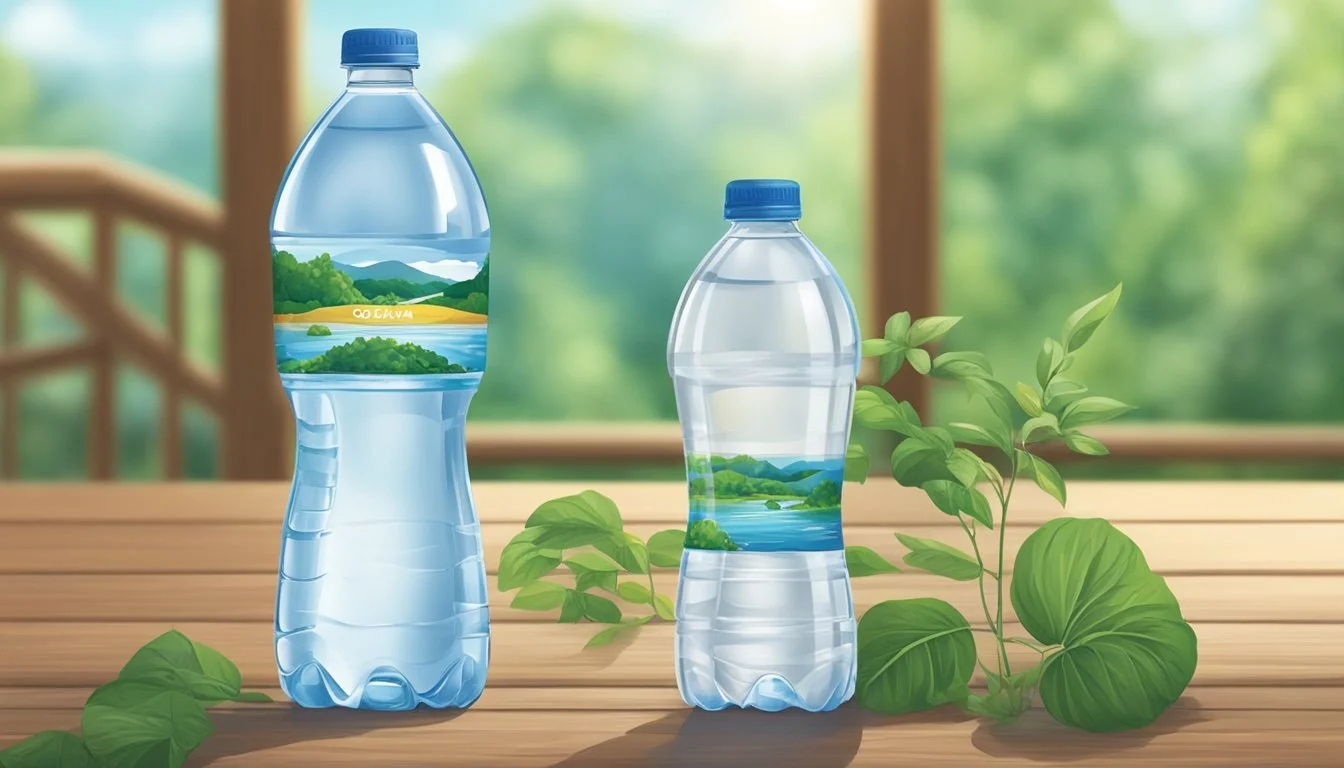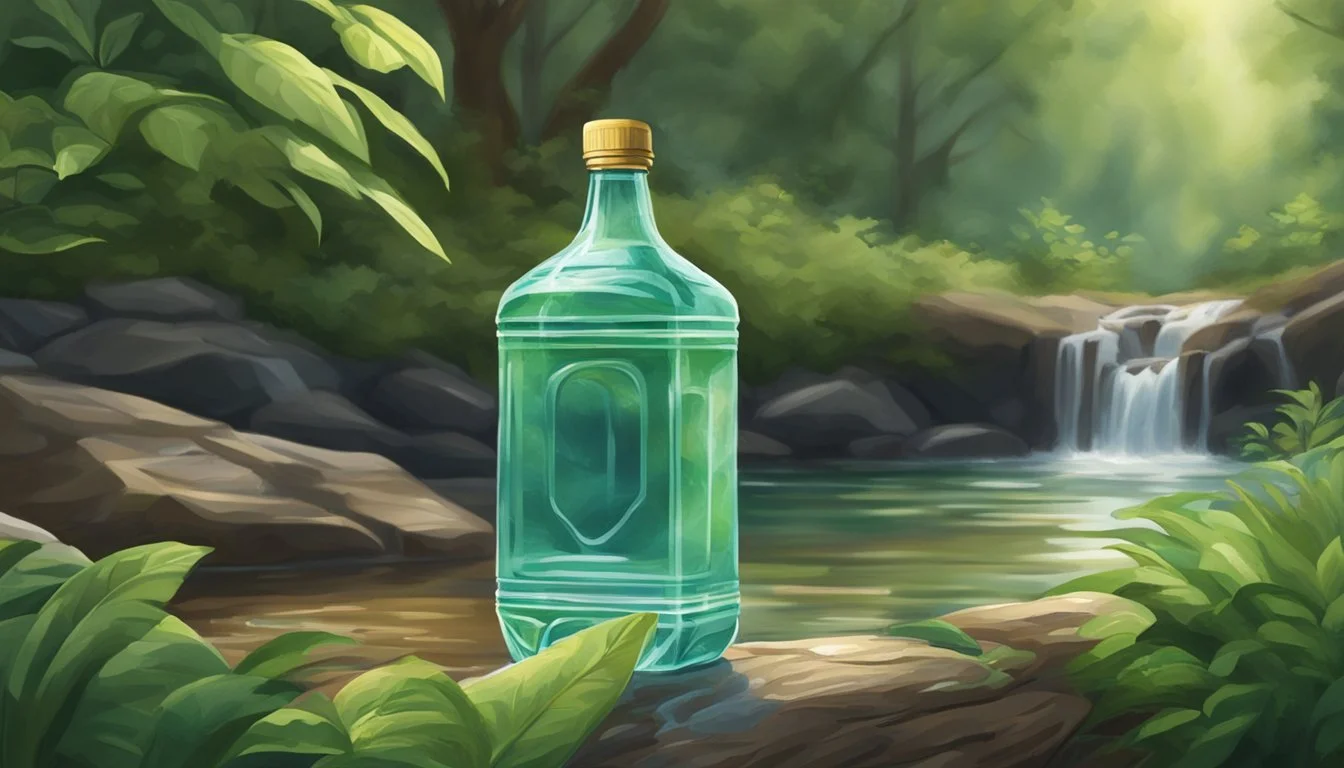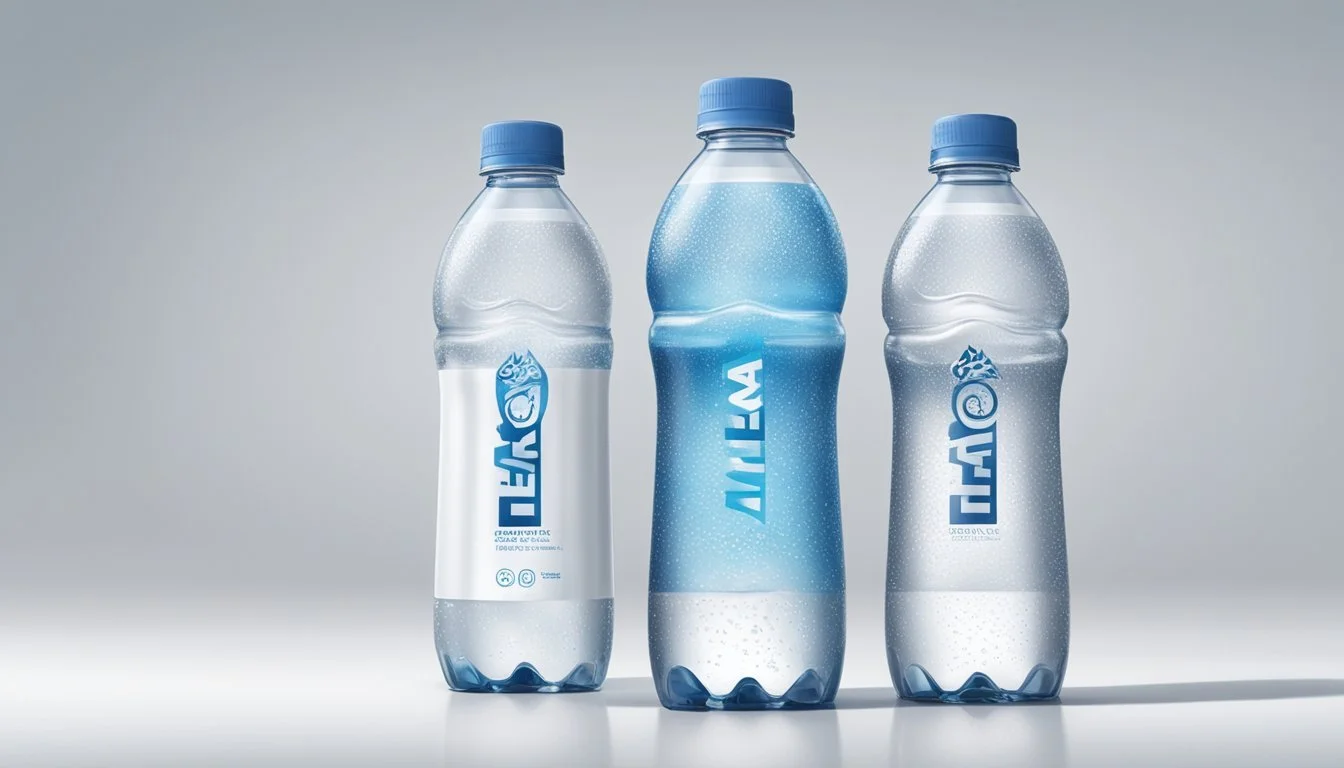Ozarka vs. The Well
Which Bottled Water is Superior?
When it comes to choosing between Ozarka and The Well, many water enthusiasts want to know which brand stands out for taste, quality, and value. Ozarka, a well-established brand, has been providing Texas spring water since 1905, making it a familiar name in the bottled water market. The Well, though newer, promises a unique blend derived from ancient springs.
For those comparing taste, many consumers appreciate Ozarka’s fresh and crisp flavor, a testament to its spring origins. The Well offers a distinct and refreshing taste, sourced from carefully selected ancient springs that provide a different, yet equally appealing, water profile. Ozarka often edges out because of its long-standing reputation and consistent quality.
Both brands strive to offer great hydration with a focus on natural sourcing, but pricing and availability may vary depending on your location. While Ozarka tends to be more widely available and potentially cost-effective in larger quantities, The Well is often sought after for its pure and distinct taste experience. Choosing the better bottled water depends on personal preferences, whether it’s the established quality of Ozarka or the unique taste of The Well.
Understanding Bottled Water
Bottled water is a prevalent hydration option, available in many forms such as spring, mineral, and purified water. It's sourced from various places like natural springs, groundwater, and even treated tap water with brands like Ozarka, Nestlé, and Aquafina.
Defining Bottled Water
Bottled water can be classified into several types based on its origin and treatment. Natural spring water comes from underground springs and maintains its purity with minimal processing. Mineral water also originates from springs but contains higher amounts of dissolved minerals, often considered beneficial for health.
Purified water is sourced from municipal tap water or groundwater and undergoes extensive filtration processes like reverse osmosis. Brands such as Aquafina and Nestlé Pure Life often fall under this category. Spring water is valued for its natural taste and perceived purity, a key selling point for brands like Ozarka.
Historical Overview
The practice of bottling water dates back centuries, with early instances found in Europe during the 17th century. Initially, it was considered a luxury item for the wealthy. By the 19th century, advancements in bottling technology made it accessible to the broader public.
In America, bottled water gained significant traction in the late 20th century fueled by increasing health awareness and the convenience factor. Key players like Nestlé and Pepsico's Aquafina revolutionized the market with their large-scale production and widespread distribution. Natural spring brands like Ozarka, sourced from springs in Texas, became popular for their eco-conscious appeal and local sourcing.
The rise of bottled water continues to adapt to consumer preferences for quality hydration and environmental responsibility.
Evaluating Water Quality
When comparing Ozarka and The Well bottled water brands, it's essential to assess various factors that influence water quality, including the source of water, treatment methods, compliance with health standards, chemical content, and taste.
Source of Water
Ozarka sources its water from natural springs in Texas, specifically the southern springs. This local spring water has a reputation for being rich in minerals and provides a distinct regional taste.
The Well acquires its water from mountain springs. These springs offer naturally filtered groundwater that flows through layers of earth and rock, accumulating various minerals in the process. This type of water is often regarded for its crisp and refreshing taste.
Treatment and Filtration Methods
Ozarka employs standard filtration processes to ensure water quality, including multi-stage filtration that removes contaminants without stripping beneficial minerals. This ensures the water remains pure while maintaining its natural mineral content.
In contrast, The Well uses a more extensive treatment process, often incorporating advanced filtration technologies like reverse osmosis or carbon filtration. These methods eliminate impurities such as PFAS chemicals, lead, and chlorine while also adding back essential minerals for taste and health benefits.
Health Standards and Regulations
Both brands comply with EPA and FDA regulations, which mandates stringent quality standards and safety protocols to ensure the water is safe for consumption.
Ozarka adheres to FDA regulations for bottled water, ensuring it meets necessary health standards, including monitoring for heavy metals and other contaminants.
Similarly, The Well complies with EPA and FDA standards, consistently testing for impurities and maintaining rigorous safety practices to ensure the water remains free from harmful substances.
Chemical Analysis
Ozarka's water composition includes an optimal balance of minerals and has controlled levels of total dissolved solids (TDS). Their springs naturally filter out harmful contaminants, resulting in pure, high-quality water.
The Well often emphasizes its water's pH levels and mineral content. Tests typically show low concentrations of heavy metals like lead and arsenic, alongside essential minerals that contribute to overall water quality and taste.
Tasting Notes
Ozarka is praised for its fresh, clean taste, attributed to its natural sources and effective filtration. Consumers often describe it as having a crisp flavor with a light mineral note, making it a popular choice for daily hydration.
The Well's mountain spring origins contribute to a distinct taste profile. It is often characterized as crisp and refreshing, with a slight mineral tang that enhances its appeal. The water's treatment process ensures a smooth flavor without any residual aftertaste, appealing to a broad range of consumers.
Environmental Considerations
When evaluating the environmental implications of Ozarka and The Well, it is essential to consider aspects like packaging materials, sourcing practices, and waste management. These factors reveal which brand is more committed to sustainability.
Packaging and Sustainability
Ozarka predominantly uses plastic bottles, which contribute significantly to plastic waste and landfill accumulation. While the brand has made strides in using recycled materials, the overall environmental footprint remains high due to the pervasive use of single-use plastic bottles.
The Well, on the other hand, offers a range of packaging options, including glass bottles, which are more sustainable. Glass is fully recyclable and reduces the harm caused by plastic waste. Additionally, The Well incorporates advanced sustainability efforts by employing renewable materials in their packaging.
Water Sourcing Impacts
Ozarka sources its water from springs located predominantly in Texas. While spring water is often marketed as pure and natural, the extraction process can have significant environmental impacts, including the depletion of local water resources and potential disruption to ecosystems.
The Well emphasizes sustainable water sourcing by tapping into renewable water sources and implementing measures to ensure minimal disruption to natural habitats. These practices help in reducing the carbon footprint associated with water extraction and promote long-term sustainability.
Waste Management
Waste management is a critical area where both brands can show their commitment to the environment. Ozarka's reliance on plastic leads to higher levels of plastic waste that need to be addressed through robust recycling programs and the use of environmentally friendly materials.
The Well demonstrates proactive waste management by prioritizing recycled materials and promoting the reuse of its glass bottles. This approach not only mitigates waste but also encourages consumers to participate in sustainability initiatives, fostering a more environmentally conscious community.
Comparative Analysis: Brands in Focus
Ozarka and The Well present distinct offerings in the bottled water market. Each brand emphasizes its unique sourcing and quality control measures to attract consumers.
Ozarka's Distinctiveness
Ozarka, founded in 1905, sources its water from natural springs in Texas. The brand is known for its commitment to purity and natural taste. Ozarka prides itself on providing 100% natural spring water, which contributes to its crisp flavor profile. The brand operates under the Nestlé Waters North America group, ensuring rigorous quality control and transparency.
Ozarka maintains a neutral pH, typically around 7.0, ideal for drinking. The brand's water quality reports are publicly accessible, affirming the purity standards. The consistent taste and trusted quality have made Ozarka a preferred choice among consumers who appreciate natural spring water.
The Well's Reputation
The Well is relatively newer in the market but focuses heavily on sustainability and eco-friendly practices. The brand sources its water from various springs known for their pristine conditions. To maintain a high standard of purity, The Well invests in advanced filtration and verification processes.
Their commitment to transparency is evident in the detailed water quality reports they provide, ensuring consumers are well-informed about what's in their water. The Well positions itself as a premium brand, often highlighting the clean taste and the beneficial minerals present in their water. This approach appeals to environmentally conscious consumers seeking quality and responsible sourcing.
Competitor Overview
Major brands like Fiji, Evian, Aquafina, and Dasani dominate the bottled water market. Each offers different sources and benefits:
Fiji is known for its rich mineral content.
Evian emphasizes its French Alps origin.
Aquafina and Dasani focus on purification through reverse osmosis.
Voss and Icelandic Glacial highlight their source's cleanliness, aiming at a premium segment. Deer Park and Poland Spring offer affordable natural spring water.
While Nestlé Pure Life and Ice Mountain share Ozarka's parent company, they differ in sourcing regions. Smartwater adopts vapor-distillation methods for a distinct taste profile.
Ozarka and The Well, though smaller players, compete by prioritizing purity, transparency, and sustainability, enabling them to stand out amidst larger competitors.
Consumer Considerations
When choosing between Ozarka and The Well, consumers often weigh various factors such as taste, health and safety concerns, and economic impact. Each aspect plays a significant role in determining which brand best suits their needs.
Taste Preferences
Taste preferences in bottled water can be subjective. Ozarka is touted for its natural spring water sourced from Texas, offering a crisp and refreshing taste. It is often favored for its clean and natural flavor profile.
The Well, on the other hand, provides purified water that has undergone rigorous filtration processes to remove impurities, resulting in a neutral and consistent taste. Some consumers might find the taste of purified water like The Well to be more predictable and reliable than natural spring water, while others might miss the distinct mineral undertones present in spring water.
Analyzing taste preferences usually comes down to whether one prefers the crisp, natural flavor of spring water or the neutral, clean taste of purified water.
Health and Safety Concerns
Health and safety are paramount when selecting bottled water. Both Ozarka and The Well adhere to strict FDA and EPA guidelines, ensuring their products are safe for consumption. Ozarka emphasizes its nature as spring water, which naturally contains minerals that might benefit health, though these claims are often debated.
The Well's purified water undergoes extensive filtration, including methods like reverse osmosis and UV treatment, to eliminate contaminants such as bacteria, viruses, and heavy metals. This might appeal to consumers concerned about potential health risks associated with natural spring sources.
Additionally, plastic bottles remain a concern. Both brands are making strides towards sustainability, but consumers should consider the environmental impact of single-use plastic bottles versus potential alternatives.
Economic Factors
Economic factors influence consumer choices significantly. The cost of bottled water varies, with Ozarka and The Well positioning themselves in different price ranges. Ozarka, focused on spring water, might be priced slightly higher due to its perceived quality and source.
The Well, offering purified water, can often be more economical. Tap water and home filter systems present even more cost-effective options. However, the convenience of bottled water cannot be overlooked, as it caters to busy lifestyles needing easy access to hydration.
Considering economic factors involves balancing the price per bottle, any associated health benefits, and personal preferences regarding water source and taste.
Innovation in Bottled Water
The bottled water industry continues to evolve with advancements in technology and the emergence of new brands and trends. These innovations focus on enhancing water quality, sustainability, and consumer health.
Technological Advancements
Technological advancements in bottled water production have significantly improved the quality and safety of the water. Modern filtration processes, such as Hydro-7, ensure that contaminants are removed more effectively.
Brands like Penta boast of using multiple-filtration systems to deliver ultra-pure water. Similarly, Core Hydration optimizes pH levels to match the body's natural balance, enhancing hydration benefits.
Moreover, the use of BPA-free materials in packaging ensures that the water remains free from harmful chemicals, addressing long-term health concerns. Technologies like these not only enhance taste but also ensure safety and health benefits.
Emerging Brands and Trends
New brands and trends are shaping the bottled water industry. Boxed Water offers an alternative to plastic bottles, promoting sustainability through eco-friendly packaging. This shift aligns with growing consumer demand for environmentally responsible options.
LIFEWTR and Ethos Water focus on premium, designer bottled water with unique branding, targeting a niche market. Zephyrhills and Crystal Geyser emphasize their natural spring sources, appealing to consumers seeking pure, natural hydration.
Emerging trends also include enhanced waters, fortified with vitamins and minerals, catering to health-conscious consumers. These innovations reflect a broader shift in the industry towards sustainability, branding, and functional health benefits.
The Business of Bottled Water
The bottled water industry is a dynamic market influenced by consumer preferences, regulatory standards, and competitive strategies from leading brands. Understanding the business of bottled water requires examining market dynamics, industry leaders, and the regulatory landscape that shapes the industry.
Market Dynamics and Consumer Behavior
Consumer behavior in the bottled water market is driven by preferences for health, convenience, and perceived quality. Health consciousness has pushed many consumers to opt for bottled water over sugary drinks. Convenience is a key factor, as bottled water is easily portable.
Brands capitalize on these trends, targeting specific demographics. Premium water brands appeal to health-focused consumers, while budget-friendly options like Ozarka and Nestlé Pure Life cater to cost-conscious buyers. Seasonal shifts also impact sales, with higher demand during hot weather.
Industry Leaders and Innovators
The bottled water industry is dominated by a few major players, including Nestlé, PepsiCo, and Coca-Cola. These companies have extensive distribution networks and strong brand recognition. Nestlé Pure Life is a significant player, offering various packaging sizes to meet diverse consumer needs.
Innovations in the industry often focus on sustainability and health. Brands are increasingly using eco-friendly packaging and promoting the source transparency of their water. The International Bottled Water Association (IBWA) plays a crucial role in setting and maintaining industry standards.
Regulatory Landscape
The bottled water industry is heavily regulated to ensure safety and quality. In the United States, the FDA oversees bottled water standards, requiring compliance with health standards similar to municipal water supplies. The IBWA also establishes guidelines for member companies.
Transparency is critical, with companies like Ozarka and Dasani providing detailed information on their water sources and treatment processes. Regulations extend to labeling, ensuring consumers receive accurate information about the product they purchase. International laws vary, with additional standards for imported bottled water.
Regulatory adherence not only protects consumer health but also maintains industry integrity, influencing brand reputation and consumer trust.
More About Ozarka
Mountain Valley Spring Water vs Ozarka: Which Bottled Water is Better?
Ozarka vs Kirkland Signature: Which Bottled Water is Better?
Ozarka vs Richard's Rainwater: Which Bottled Water is Better?
Ozarka vs Whole Foods Italian Still Mineral water: Which Bottled Water is Better?
More About The Well
Cascade Mountain vs The Well: Which Bottled Water is Better?
Hawaiian Springs vs The Well: Which Bottled Water is Better?
Icelandic Glacial vs The Well: Which Bottled Water is Better?
Mountain Valley Spring Water vs The Well: Which Bottled Water is Better?
Nestle Pure Life vs The Well: Which Bottled Water is Better?
Richard's Rainwater vs The Well: Which Bottled Water is Better?
The Well vs Kirkland Signature: Which Bottled Water is Better?
The Well vs Talking Rain AQA: Which Bottled Water is Better?
Whole Foods Italian Still Mineral water vs The Well: Which Bottled Water is Better?





